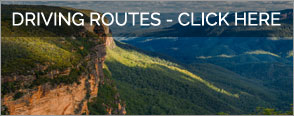In New South Wales, a number of different names are used for land that has been set aside for conservation and public enjoyment. Each type of reserve under the NSW National Parks and Wildlife Act is for a slightly different purpose, so they are managed slightly differently too. Some reserves are mostly for protecting nature, while others are more important for public recreation. These differences are set out in legislation.
Historic sites are usually smaller areas associated with a person, event or historical theme, or they include a building, place, feature or landscape of cultural significance. They provide opportunities for visitor enjoyment and the sustainable use of buildings or modified natural areas.
Karst conservation reserves protect karst landscapes with their unusual ecosystems and special geological features such as limestone caves. Some caves are open to the public for guided tours, with lighting and other facilities installed.
National parks are relatively large areas that protect important ecosystems, natural or cultural features or outstanding landscapes. Some small areas within a park may have been modified by previous land uses or for public use. National parks are managed firstly to protect natural and cultural heritage. Recreational activities which do not significantly affect natural and cultural values are permitted. Public facilities such as picnic areas and walking tracks are usually provided.
Nature reserves are natural areas of special scientific interest mainly established to conserve their native plant and animal communities. Unlike other park categories, nature reserves do not normally provide visitor facilities.
Regional parks are open space recreation areas for local communities, with a range of facilities to assist public enjoyment. Usually the environment is modified, but regional parks often include important bushland remnants. Special purpose facilities for horseriding, cycling or other sports may be provided.
State conservation areas are similar to national parks and contain important natural environments and cultural values. Mining activity and exploration (which are excluded from national parks) may be permitted. Some offer recreation opportunities while others have been reserved primarily for nature conservation.
Wilderness areas are large natural areas that support plant and animal communities which are in a relatively natural state. They have no facilities but instead provide opportunities for self-reliant, low-impact recreation such as bushwalking, photography and birdwatching. Wilderness areas are often declared over other types of existing reserves, such as national parks.
Local reserves of a number of different types may be managed by local councils or community trusts.





